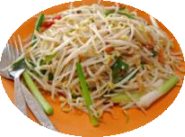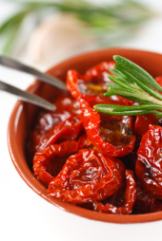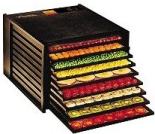How to Dehydrate Food – Not Kill It
How to dehydrate food but not kill the important raw and living enzymes. The dehydrator is used in many raw diet recipes.
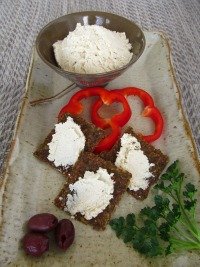
Knowing how to dehydrate food is important especially to the raw foodist who wants their food preserved, yet with the essential enzymes left intact.
The role of a dehydrator in raw food recipes is similar to that of a stove, oven and even microwave in conventional cooking. The dehydrator provides a source of gentle heat to preserve, “bake” and warm up cold, raw foods and give foods a “cooked” taste while still preserving the living enzymes that we eat.
In using a food dehydrator, we raw foodists can enjoy living crackers, breads, pancakes and potato chips to name a few. So for those of you who crave the distinctive "crunch" of baked goods while still being raw, a dehydrator is for you.
Learning how to dehydrate food is a great way to preserve fresh
and
while they are in season. Since the raw foodist cannot preserve foods by conventional canning or freezing when blanching is required, a food dehydrator is the perfect solution when buying produce in bulk so you can dehydrate and enjoy later. If any of this interests you, then you will just need to know how to dehydrate food.
Here are some of the tips and techniques I have learned about how to dehydrate food successfully. I personally feel the inexpensive dehydrators are not the best option. May raw foodists love the Excalibur food dehydrator.
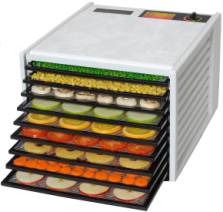
Dehydrator Tips
Prepping Fresh Foods - Cut all your fruits and vegetables the same thickness. Usually you'll want to slice them no thicker than a ¼ inch, sometimes even thinner. This may be tricky so consider investing in a slicer for uniform thickness. Some fleshy fruits are an exception to this rule and can be halved or quartered.
Dehydrator Sheets- Invest in Paraflexx® sheets, sometimes called “dehydrator sheets.” You will use these for live granola, fruit leathers, crackers, breads and wet foods. There are also generic types of dehydrator sheets that are more inexpensive than the brand name Paraflexx® . These feature a non-stick surface that dried foods will peel off of with ease. Whatever the name, these handy sheets are essential to help you get more uses out of your dehydrator.
Time to Dehydrate- The time it takes to dehydrate foods varies considerably. There are many factors such as the amount of moisture in the food itself, the amount of humidity in the surrounding air, the finished texture you desire and the temperature at which the dehydrator is set. A good rule of thumb when knowing how to long to dehydrate food is to allow several hours, possibly overnight. Time and the temperature are only guides as to how long to dry your foods. Dry your foods to the extent that you like them, either brittle and crispy or chewy.
Raw Temperatures-To preserve enzymes and keep foods both raw and living, the drying time is important. The definition of raw and living foods is foods that have not been exposed to heat high enough to denature the important living enzymes. As every enzyme is different the temperature varies. The most widely recognized food temperature for living foods is about 118° F. However this lower drying temperature extends the drying time.
Food Temperature vs. Dial Settings- While your food is drying, the temperature of your food is about 20 to 25 degrees cooler than the air temperature in your dehydrator. As moisture evaporates from the surface it actually cools the food and so usually during the dehydrating process, the air temperature (which is reflected on the setting of your dehydrator) is higher than the actual food temperature.
Dry Food Test - The last thing you want when drying food is to come later and see mold. So make sure that your food is totally dry before you store it. Put the cooled dried food in a plastic zip lock bag. If water droplets form on the inside of the bag, your food is not dry enough and you need to put it back and dry it longer. No droplets means you can safely store it.
Rotate the Trays- Even when using the best food dehydrator, take the time to rotate the trays to allow uniform drying. A few hours into the drying time, remove and rotate the trays and exchange the lower trays for the upper trays since even with the presence of a fan, air circulation can be uneven.
Two Temperatures -- A Fast Dry Method for Living Enzymes
Knowing how to dehydrate food as quickly as possible and still keep it raw and living is an essential technique for raw food enthusiasts.
The difference between food temperature and dial settings is important to know because it relates to proper dehydration temperatures.
The two temperature fast dry method is to dehydrate first at the highest temperature setting, 145º F, for only the first two hours of dehydrating. This is because in the first few hours the temperature of the food will not exceed the critical 118º F temperature. However, after the first 2 hours, turn your dehydrator setting to about 105º F and keep it at this temperature until the food is finished. I rotate trays at this point, too. This will significantly reduce the drying time by several hours while still ensuring that you are making raw and living foods.
Want to know more about how to dehydrate food? Check out these pages:
Go from How to Dehydrate Food to HOME of Raw Food Diet Magazine
Follow
Guide with Over 50 Recipes!
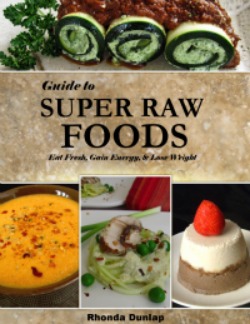
Guide to Super Raw Foods is now available for Kindle or paperback on Amazon
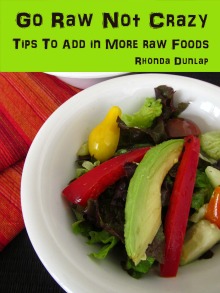
Sign-up for Newsletter and get my Free E-Book Go Raw Not Crazy
Check Out These Sites:
